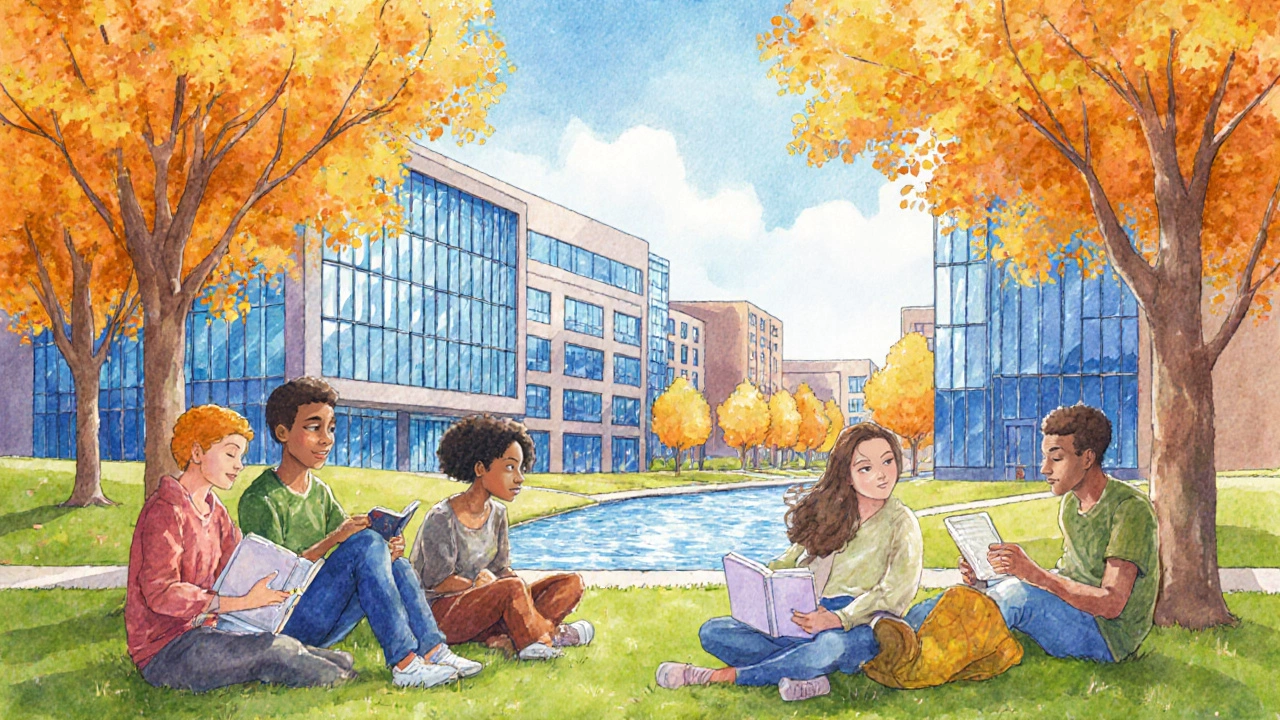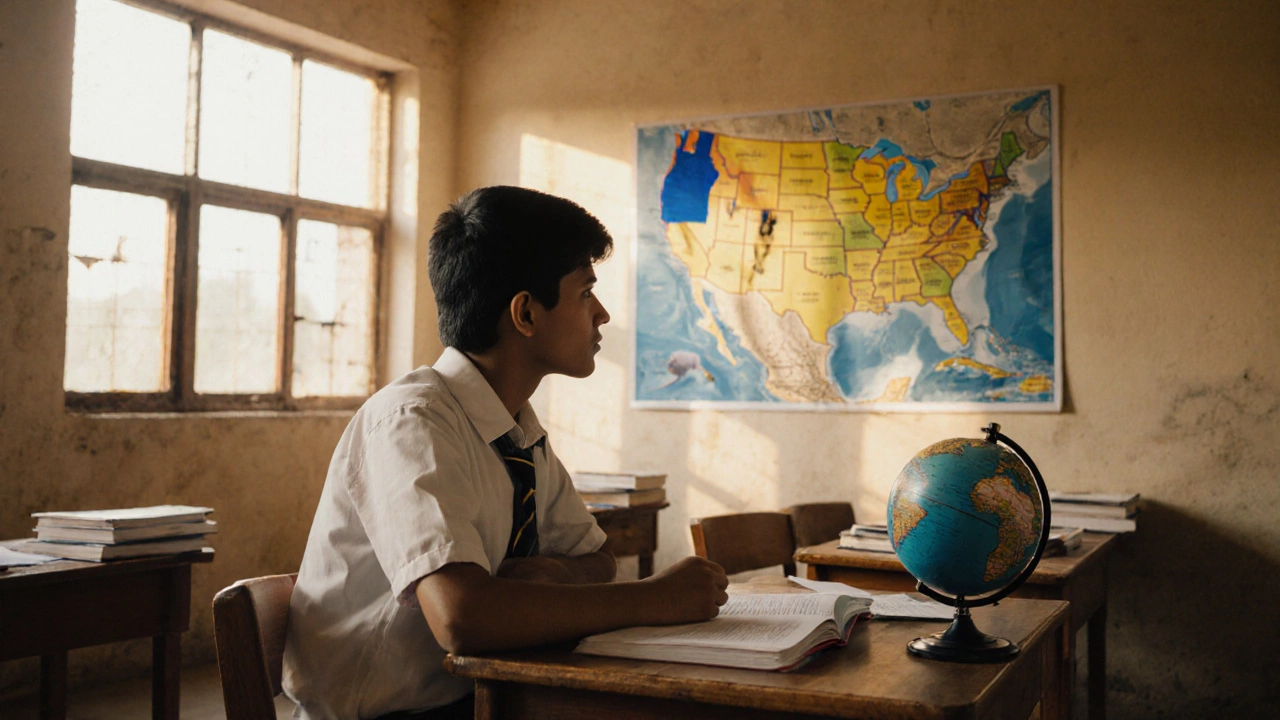US Education Cost & Scholarship Estimator
Estimate your total education expenses and scholarship impact for US study compared to India. Based on data from the article: US tuition ranges $30k-$45k/year, Indian tuition $3k-$5k/year.
Quick Takeaways
- US universities rank higher globally and offer flexible curricula for CBSE grads.
- American degrees are widely recognized by multinational employers.
- Scholarships and work‑study options can offset higher tuition.
- Campus life builds soft skills that Indian classrooms often miss.
- Visa rules are strict, but clear pathways exist for students.
When Studying in the United States is pursuing higher education at American colleges and universities, many CBSE graduates wonder if it outweighs staying in India. This article breaks down the real advantages, costs, and steps involved, so you can decide if the study in USA route fits your goals.
Why US Education Appeals to CBSE Students
The US system is built around a credit‑based structure where you earn points for each course and can mix majors, minors, and electives. CBSE’s board‑exam focus can feel limiting, but American colleges let you explore subjects beyond the core science‑math track. For example, a student who loved physics can pair it with a humanities minor, something rarely possible in Indian universities.
Academic Flexibility & Global Recognition
United States hosts more than 4,000 accredited higher‑education institutions, many appearing in the top 100 of global rankings. A Bachelor's degree typically takes four years and follows a liberal‑arts model, allowing you to switch majors without losing time. Employers in tech, finance, and consulting often prioritize US‑issued degrees because they signal exposure to research‑intensive curricula and critical‑thinking training.

Financial Aspects & Scholarships
Tuition in the US is higher-average $30,000USD per year for public universities and $45,000USD for private ones. Yet the financial picture changes when you factor in scholarships need‑based or merit‑based awards that can cover 20‑100% of tuition. Organizations like the Fulbright Program, the Institute of International Education, and many university‑specific funds target Indian applicants. Additionally, the Optional Practical Training (OPT) program lets you work up to three years after graduation, turning a short‑term expense into a long‑term investment.
Campus Life, Soft Skills, and Networking
American campuses are micro‑societies where clubs, sports, and volunteer groups thrive. Engaging in a student organization helps you build leadership, communication, and teamwork skills that Indian classrooms rarely emphasize. The diverse student body-from Asia, Europe, Africa, and the Americas-creates daily cross‑cultural conversations, sharpening your adaptability-a key asset for global careers.
Application Process Simplified
Getting into a US university usually requires three standardized tests: the GRE Graduate Record Examination for most master’s programs, the TOEFL or IELTS to prove English proficiency, and, for certain institutions, the SAT/ACT for undergraduate entry. Your CBSE grades translate into a GPA using a standard conversion chart (e.g., 95% ≈ 4.0). Most schools use the Common Application, a single portal that lets you upload essays, recommendation letters, and test scores.
Visa Rules and Post‑Study Opportunities
Once admitted, you apply for an F‑1 student visa which permits full‑time study and limited on‑campus employment. After you complete your program, the Optional Practical Training (OPT) extension lets you stay and work in the US for up to 12 months (or 36 months for STEM majors). The STEM extension is a major draw for CBSE students interested in engineering, computer science, or biotech.

Potential Drawbacks & How to Mitigate Them
Culture shock is real-food, climate, and teaching styles differ sharply from India. To ease the transition, many universities run orientation programs and buddy systems that match incoming Indian students with senior peers. Financially, the cost can still be steep despite scholarships; budgeting tools and part‑time campus jobs can bridge gaps. Finally, visa processing delays sometimes occur; start your paperwork at least six months before your program begins.
Decision Checklist for CBSE Graduates
- Do I want a globally recognized degree with flexible majors?
- Can I secure a scholarship or funding to cover tuition?
- Am I comfortable with a longer application timeline (tests, essays, visa)?
- Do I plan to work in the US after graduation (OPT/STEM extension)?
- Have I researched campus support for Indian students?
| Factor | United States | India |
|---|---|---|
| Global Ranking | Top 100 universities dominate | Few institutions in top 300 |
| Curriculum Flexibility | Credit‑based, multiple majors/minors | Rigid syllabus, limited electives |
| Average Tuition (USD) | $30k‑$45k per year | $3k‑$5k per year (public) |
| Scholarship Availability | High (need‑based & merit) | Limited, mostly merit‑based |
| Post‑Study Work Options | OPT up to 3 years (STEM) | Limited, depends on sector |
| Campus Life & Soft Skills | Vibrant clubs, diverse peers | Academics focused, fewer clubs |
Next Steps & Troubleshooting
If you’re ready to apply, start by taking the TOEFL or IELTS and the SAT/ACT (or GRE for graduate). Use the conversion chart to calculate your GPA, then shortlist universities that offer strong scholarships for Indian students. Should your visa get delayed, contact the international student office-they often provide emergency assistance and can help you secure a deferred admission.
Frequently Asked Questions
Can a CBSE student qualify for US scholarships?
Yes. Many universities consider academic excellence, leadership, and community service. Organizations like the Fulbright and the Institute of International Education have dedicated funds for Indian applicants. You’ll need a strong GPA conversion, good TOEFL/IELTS scores, and compelling personal statements.
How does the credit system differ from CBSE grading?
CBSE awards a single board exam result, while the US credit system assigns points for each course (usually 3‑4 credits). You accumulate a total of 120‑130 credits for a bachelor's degree, allowing you to switch majors without restarting.
Is OPT available for all fields of study?
OPT is open to any full‑time student, but the 24‑month STEM extension is limited to designated Science, Technology, Engineering, and Mathematics programs. Non‑STEM fields only get the standard 12‑month period.
What are the biggest cultural challenges?
Adjusting to a more discussion‑oriented classroom, navigating a different food culture, and dealing with homesickness are common. Most campuses offer cultural clubs, counseling services, and mentorship programs to help Indian students settle in.
How long does the US visa process usually take?
Processing times vary, but applying 3-4 months before your program start date is safe. After receiving the I‑20 form from your university, you can schedule the visa interview. Delays can happen, so keep communication open with the university’s international office.
